Themed collection Energy & Environmental Science Recent HOT Articles

Progress and perspectives on hydrogen storage and release in the negative hydrogen medium
This review presents the design principles and related mechanism studies of catalyst for hydrogen storage and cyclic regeneration of the negative hydrogen medium, providing valuable guidance for the development of hydrogen energy.

Energy Environ. Sci., 2025, Advance Article
https://doi.org/10.1039/D5EE04149J
Dynamic transformation of active sites in energy and environmental catalysis
Active sites play a pivotal role in photo/electrocatalysis, particularly in the transition from fossil fuels to clean, efficient and renewable energy sources.

Energy Environ. Sci., 2024,17, 6435-6481
https://doi.org/10.1039/D4EE02365J
Intrinsic carbon structure modification overcomes the challenge of potassium bond chemistry
Heteroatom doping engineering is widely used to modify the physical/chemical properties of carbon anodes, which can regulate the electronic structure and interface state to regulate the potassium bond to improve potassium storage performance.

Energy Environ. Sci., 2024,17, 2968-3003
https://doi.org/10.1039/D4EE00438H
Green recycling of spent Li-ion battery cathodes via deep-eutectic solvents
This review highlights deep-eutectic solvents for green recycling of spent Li-ion battery cathodes towards future commercialization.

Energy Environ. Sci., 2024,17, 867-884
https://doi.org/10.1039/D3EE02978F
Progress in techniques for improving the output performance of triboelectric nanogenerators
Enhancing the output performance of triboelectric nanogenerators through surface modification, mechanical design and power management.

Energy Environ. Sci., 2024,17, 885-924
https://doi.org/10.1039/D3EE03520D
Carbon-based electrocatalysts for rechargeable Zn–air batteries: design concepts, recent progress and future perspectives
This review provides an in-depth discussion of the carbon-based electrocatalysts for rechargeable Zn–air batteries from design strategies, research progress, and future perspectives.

Energy Environ. Sci., 2024,17, 386-424
https://doi.org/10.1039/D3EE03059H
Supply risk considerations for photoelectrochemical water splitting materials
Absorber materials for photoelectrochemical water splitting have supply risks emerging from supply, demand, concentration, and political risks.

Energy Environ. Sci., 2024,17, 2369-2380
https://doi.org/10.1039/D3EE04369J
Freezing the p–i–n interlayer with a symmetric phenolic compound to achieve favorable vertical morphology and efficient pseudo-planar heterojunction organic solar cells with excellent stability
A strategy of using symmetric phenolic compound 4,4′-dihydroxybiphenyl to freeze p–i–n interlayer of pseudo-planar heterojunction organic solar cells has been first developed, resulting in optimized and stable vertical phase separation morphology.

Energy Environ. Sci., 2025,18, 9125-9137
https://doi.org/10.1039/D5EE04052C
A universal strategy toward homogenized metal oxide/perovskite contact for efficient solar cells and modules fabricated in ambient air
A universal hydrazide strategy enables homogenized metal oxide/perovskite contact and dual-side passivation for air-processed solar cells and modules.

Energy Environ. Sci., 2025,18, 9138-9148
https://doi.org/10.1039/D5EE04601G
High-power hydrogel-based moisture-electric generators
This work presents a high-power hydrogel-based moisture-electric generator via molecular engineering design, which achieves a superior open-circuit voltage of 0.6 V and a short-circuit current of 0.58 mA cm−2.

Energy Environ. Sci., 2025, Advance Article
https://doi.org/10.1039/D5EE04512F
Atom-dominated relay catalysis of high-entropy MXene promotes cascade polysulfide conversion for lithium–sulfur batteries
The high-entropy TiVNbMoC3 MXene, with its atom-dominated relay catalysis effect and resilient lattice configuration, promotes a cascade of sulfur conversions and guides uniform Li+ deposition, enabling shuttle-free and dendrite-free Li–S batteries.

Energy Environ. Sci., 2024,17, 7735-7748
https://doi.org/10.1039/D4EE03402C
Time-resolved operando insights into the tunable selectivity of Cu–Zn nanocubes during pulsed CO2 electroreduction
Electrochemical CO2 reduction using CuZn nanocubes boosted ethanol selectivity when pulsed in the oxidation regime of zinc, while time-resolved operando techniques uncovered the key roles of dynamic zinc oxide formation and hydroxide coverage.

Energy Environ. Sci., 2024,17, 7081-7096
https://doi.org/10.1039/D4EE02308K
Ambient scalable fabrication of high-performance flexible perovskite solar cells
Ionic-liquid mediated scalable ambient-printing for efficient perovskite solar modules to achieve wearable electronic integration.

Energy Environ. Sci., 2024,17, 7069-7080
https://doi.org/10.1039/D4EE02925A
Molecularly engineered potential of d-orbital modulated iron-bridged delaminated MBene for rechargeable Zn–air batteries
An air cathode with high catalytic activity and reversibility toward the OER and ORR is designed by the typical coordinations of iron phthalocyanine molecule crystals on delaminated MoAl1−xB MBene sheets.

Energy Environ. Sci., 2024,17, 6559-6570
https://doi.org/10.1039/D4EE02868F
Tailoring the Wadsley–Roth crystallographic shear structures for high-power lithium-ion batteries
A tailored Wadsley–Roth crystallographic shear structure containing inspiring domains with tetrahedron, tetrahedron-free and large-size blocks in the lattice of novel titanium niobium tungsten oxide for high-power lithium-ion batteries.

Energy Environ. Sci., 2024,17, 6571-6581
https://doi.org/10.1039/D4EE02293A
Inherent anti-Fenton property of single-atom rhenium for the ultra-durable oxygen reduction reaction
We have created a Re-SAC catalyst featuring a Re–N4 configuration with inherent anti-Fenton properties during ORR catalytic activity.

Energy Environ. Sci., 2024,17, 5892-5900
https://doi.org/10.1039/D4EE02375G
Insights into the defect-driven heterogeneous structural evolution of Ni-rich layered cathodes in lithium-ion batteries
The combination of novel operando neutron diffraction and 4D-STEM clearly reveals the defect-driven heterogeneous phase evolution in LIB full cells.

Energy Environ. Sci., 2024,17, 5876-5891
https://doi.org/10.1039/D4EE01777C
Sustainable interface regulation enabled by a bismuth solid-state surfactant effect for Zn-free anodes
This study introduces a novel application of Bi as a solid-state surfactant in Zn electrodes, where the arriving Zn adatoms tend to migrate below Bi and nucleate locally instead of diffusing laterally and forming protruding structures.

Energy Environ. Sci., 2024,17, 5429-5439
https://doi.org/10.1039/D4EE01644K
The origins of critical deformations in cylindrical silicon based Li-ion batteries
Correlative neutron and X-ray imaging unravels the causes of localized defects in Li-ion batteries containing a silicon-graphite based anode.

Energy Environ. Sci., 2024,17, 5048-5059
https://doi.org/10.1039/D4EE00590B
Tuning sorbent properties to reduce the cost of direct air capture
A direct air capture (DAC) economic model that accounts for sorbent degradation is developed. Experimentally-measured parameters are then integrated to identify sorbent and process features that minimize both the DAC carbon footprint and cost.

Energy Environ. Sci., 2024,17, 4544-4559
https://doi.org/10.1039/D4EE00616J
A reversible self-assembled molecular layer for lithium metal batteries with high energy/power densities at ultra-low temperatures
We have demonstrated a molecular interface engineering strategy to address the design dilemma of low-temperature electrolytes for lithium metal batteries.

Energy Environ. Sci., 2024,17, 4531-4543
https://doi.org/10.1039/D4EE01298D
Achieving stable lithium metal anodes via the synergy of electrostatic shielding and the high Li+ flux inorganic interphase
A cationic polymer was developed as protective layer for Li anodes. The multiple cationic sites in molecule provided enhanced electrostatic shielding, whereas NO3− anions generated robust and high Li+ flux inorganic SEI.

Energy Environ. Sci., 2024,17, 4519-4530
https://doi.org/10.1039/D4EE00399C
Developing kilometers-long gravity heat pipe for geothermal energy exploitation
The world-longest SLGHP (4149 m long) and the world's first SLGHP output vapor-driven power generator are developed for the exploitation of geothermal energy.

Energy Environ. Sci., 2024,17, 4508-4518
https://doi.org/10.1039/D4EE01235F
Insights into lithium inventory quantification of LiNi0.5Mn1.5O4–graphite full cells
A systematic methodology for the quantification of lithium inventory is developed and the degradation mechanisms of high-voltage lithium batteries are revealed.

Energy Environ. Sci., 2024,17, 4263-4272
https://doi.org/10.1039/D4EE00842A
Robust battery interphases from dilute fluorinated cations
This approach utilizes electrostatic attraction of very low fractions (~0.1 wt%) of readily reducible fluorinated cations in electrolyte to form a robust fluorine-rich SEI and enable stable Li-metal batteries.

Energy Environ. Sci., 2024,17, 4137-4146
https://doi.org/10.1039/D4EE00296B
Self-constructing a lattice-oxygen-stabilized interface in Li-rich cathodes to enable high-energy all-solid-state batteries
A lattice-oxygen-stabilized interface is formed in situ by the interaction of indium and oxidized lattice oxygen in the interface of Li2RuO3 (LRO) and Li3InCl6 (LIC), mitigating the irreversible lattice oxygen loss and stabilizing the surface structure.

Energy Environ. Sci., 2024,17, 3052-3059
https://doi.org/10.1039/D4EE00938J
Multi-site catalysis of high-entropy hydroxides for sustainable electrooxidation of glucose to glucaric acid
Multi-site catalysis of high-entropy hydroxides for co-production of glucaric acid and ammonia.

Energy Environ. Sci., 2024,17, 3042-3051
https://doi.org/10.1039/D4EE00221K
Regulating electrode/electrolyte interfacial chemistry enables 4.6 V ultra-stable fast charging of commercial LiCoO2
A schematic diagram of the mechanism of our fluorinated “cocktail electrolyte” stabilizing electrode/electrolyte interfaces in 4.6 V LCO batteries.

Energy Environ. Sci., 2024,17, 3021-3031
https://doi.org/10.1039/D4EE00676C
Compact, robust, and regulated-output hybrid generators for magnetic energy harvesting and self-powered sensing applications in power transmission lines
A hybrid magnetic energy harvester is demonstrated for self-powered sensors in transmission lines, showcasing unprecedented power density, compact size, lightweight, waterproofing, resilience to current fluctuations, and environmental robustness.
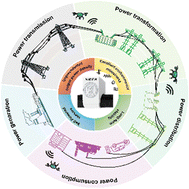
Energy Environ. Sci., 2024,17, 2787-2799
https://doi.org/10.1039/D3EE04563C
Towards standardized grid emission factors: methodological insights and best practices
Grid emission factors from official sources vary. Nine relevant aspects were identified and their influence quantified. The recommended set of aspects best represents emissions from grid electricity consumption.

Energy Environ. Sci., 2024,17, 2776-2786
https://doi.org/10.1039/D3EE04394K
Unveiling the adsorption tendency of film-forming additives to enable fast-charging hard carbon anodes with regulated Li plating
By unveiling the adsorption tendency of EC and FEC additives on defective graphene surfaces and its impact on SEI formation, hard carbon anodes with efficient Li plating regulation can be achieved for fast-charging lithium-ion batteries.

Energy Environ. Sci., 2024,17, 2500-2511
https://doi.org/10.1039/D4EE00119B
An ultrafast Na-ion battery chemistry through coupling sustainable organic electrodes with modulated aqueous electrolytes
Regulating the solvation sheath reorganization kinetics through electrolyte engineering can facilitate an unprecedented battery chemistry.

Energy Environ. Sci., 2024,17, 2480-2491
https://doi.org/10.1039/D4EE00367E
Light-induced quinone conformation of polymer donors toward 19.9% efficiency organic solar cells
UV-light illumination converts the aromatic conformation of polymer donors into a rigid quinone structure, resulting in compact fibrillar aggregation of the active layer to achieve a maximum efficiency of 19.9% of single-junction organic solar cells.

Energy Environ. Sci., 2024,17, 2492-2499
https://doi.org/10.1039/D4EE00605D
Modeling diurnal and annual ethylene generation from solar-driven electrochemical CO2 reduction devices
Integrated solar fuels devices for CO2 reduction (CO2R) are a promising technology class towards reducing CO2 emissions.

Energy Environ. Sci., 2024,17, 2453-2467
https://doi.org/10.1039/D4EE00545G
Engineering a zinc anode interphasial chemistry for acidic, alkaline and non-aqueous electrolytes
By employing 3,5-bis(trifluoromethyl) pyrazole (TFMP) as an electrolyte additive in both aqueous and non-aqueous mediums, a versatile interphase strategy is achieved. This facilitates stable Zn anodes with improved efficiency and longer cycling life.

Energy Environ. Sci., 2024,17, 2468-2479
https://doi.org/10.1039/D4EE00062E
Future environmental impacts of global hydrogen production
We quantified the life-cycle environmental impacts of H2 production at the regional and global levels for the first time.

Energy Environ. Sci., 2024,17, 2157-2172
https://doi.org/10.1039/D3EE03875K
Are sodiation/de-sodiation reactions reversible in two-dimensional metallic NbSe2?
The sodiation/de-sodiation mechanism of metallic NbSe2 anodes is corrected to involve an initial irreversible conversion from NbSe2 to Na2Se/Nb composites and the subsequent reversible selenide conversion reaction.

Energy Environ. Sci., 2024,17, 2173-2181
https://doi.org/10.1039/D4EE00143E
Renovating the surface matrix of FAPbl3 perovskite quantum dots via phase-transfer catalysis for 16.29% efficiency solar cells
A feasible surface matrix renovation strategy is reported, which could not only substantially eliminate surface vacancies but also predominantly ameliorate the stacking orientation of perovskite quantum dots.

Energy Environ. Sci., 2024,17, 2145-2156
https://doi.org/10.1039/D3EE03751G
Double selective ionic gel with excellent thermopower and ultra-high energy density for low-quality thermal energy harvesting
Thermodiffusion and thermogalvanic effects of single redox electrolytes are synergistically utilized and enhanced by double selective gel design of ionic thermoelectric cells, generating remarkable thermopower and energy output in a long-cycle mode.
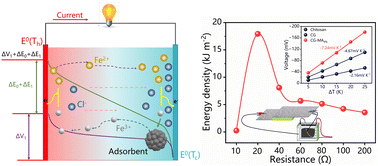
Energy Environ. Sci., 2024,17, 1664-1676
https://doi.org/10.1039/D3EE03759B
Influence of contouring the lithium metal/solid electrolyte interface on the critical current for dendrites
Efforts to avoid dendrites by increasing the interfacial surface area to lower local current densities are limited by significant local pressure accumulation associated with the topography of any surface contouring.
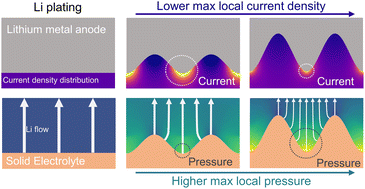
Energy Environ. Sci., 2024,17, 1448-1456
https://doi.org/10.1039/D3EE03322H
Giant tridimensional power responses in a T-shaped magneto–mechano–electric energy harvester
We present a T-shaped MME-EH that enables collaborative twisting or bending operation modes for tridimensional responses. The device produces a peak–peak output power of 98.5 mW at 60 Hz, which is 262% higher than the state-of-the-art results.

Energy Environ. Sci., 2024,17, 1426-1435
https://doi.org/10.1039/D3EE03634K
Exceptional thermoelectric performance in AB2Sb2-type Zintl phases through band shaping
We obtained exceptional power factors and zT values in p-type Mg3Sb2-based materials by alloying Zn at the Mg2 sites for double band degeneracy and alloying Yb at the Mg1 sites of Mg3Sb2 for decreased band effective mass.

Energy Environ. Sci., 2024,17, 1416-1425
https://doi.org/10.1039/D3EE04164F
Cryo-ultramicrotomy enables TEM characterization of global lithium/polymer interfaces
The cryo-ultramicrotomy technique has been implemented in lithium battery studies, offering an unprecedented opportunity to investigate the atomic to millimeter scale structural features and compositions of the electrode/electrolyte interfaces.

Energy Environ. Sci., 2024,17, 1436-1447
https://doi.org/10.1039/D3EE04189A
Crystallization dynamics and stabilization of FAPbI3 single-phase perovskite
In a stable external environment, a slow crystallization rate fosters a stable lattice of pure “black”-phase perovskite, while post treatment at the grain boundaries enhance overall grain stability, contributing to long-term stability.
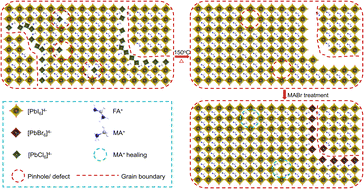
Energy Environ. Sci., 2024,17, 1407-1415
https://doi.org/10.1039/D3EE02404K
Balancing polysulfide containment and energy loss in lithium–sulfur batteries
Membrane modification may obstruct metal-ion mass flux, increasing battery overpotential and reducing performance. Balancing shuttle effect of separator-crossing species and minimizing overpotential-induced energy loss is crucial.

Energy Environ. Sci., 2024,17, 1073-1082
https://doi.org/10.1039/D3EE03700B
An all-electrochem-active silicon anode enabled by spontaneous Li–Si alloying for ultra-high performance solid-state batteries
An all-electrochem-active Si/Li21Si5 anode was designed, in which the Li21Si5 served as efficient ionic/electronic channel and expansion buffer. It achieved an ultra-high ICE of 97.8% and a low expansion rate of 18.8% at a capacity of 17.9 mA h cm−2.

Energy Environ. Sci., 2024,17, 1061-1072
https://doi.org/10.1039/D3EE03877G
Triboelectric junction: a model for dynamic metal–semiconductor contacts
A “triboelectric junction” is a space charge region induced by the triboelectric effect, dominating the electron–hole separation process in dynamic semiconductor-based contacts.

Energy Environ. Sci., 2024,17, 149-157
https://doi.org/10.1039/D3EE02870D
Tuning the solution aggregation and molecular order for efficient and thermally stable polymer solar cells
Molecular ordering effect of semi-paracrystalline polymers on the solution aggregation structure, morphology, and performance of polymer/nonfullerene blends has been thoroughly investigated by advanced neutron scattering and complementary techniques.

Energy Environ. Sci., 2023,16, 5822-5831
https://doi.org/10.1039/D3EE02354K
Origins of hydrogen peroxide selectivity during oxygen reduction on organic mixed ionic–electronic conducting polymers
Through experiment and theory, this work explains how a set of OMIEC polymer electrodes selectively reduce oxygen to hydrogen peroxide.

Energy Environ. Sci., 2023,16, 5409-5422
https://doi.org/10.1039/D3EE02102E
Dredging photocarrier trapping pathways via “charge bridge” driven exciton–phonon decoupling enables efficient and photothermal stable quaternary organic solar cells
The “charge bridge” strategy is applied to organic photovoltaic devices, which dredges photocarrier trapping pathways by facilitating exciton–phonon decoupling. This benefit leads to simultaneous improvement of efficiency and photothermal stability.

Energy Environ. Sci., 2023,16, 3350-3362
https://doi.org/10.1039/D3EE01270K
From fossil to green chemicals: sustainable pathways and new carbon feedstocks for the global chemical industry
Green methanol and green ammonia produced by renewable electricity and electricity-based hydrogen become the backbone for a defossilised global chemical industry.

Energy Environ. Sci., 2023,16, 2879-2909
https://doi.org/10.1039/D3EE00478C
Dual mechanism of ion (de)intercalation and iodine redox towards advanced zinc batteries
We propose a dual-storage ion solution of Zn2+ and I− with a cathode containing a mixture of NH4V4O10 and porous activated carbon, exhibiting a dual mechanism of Zn2+ (de)intercalation and iodine redox with adsorption–desorption.
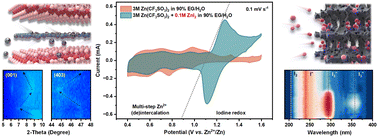
Energy Environ. Sci., 2023,16, 2358-2367
https://doi.org/10.1039/D3EE00501A
A conformally bonded molecular interface retarded iodine migration for durable perovskite solar cells
A molecular hole transport material retards the iodine migration and delivers high stability in a harsh 85 °C MPP test.
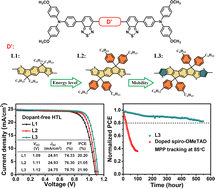
Energy Environ. Sci., 2023,16, 1597-1609
https://doi.org/10.1039/D2EE03565K
High-performance all-solid-state Li2S batteries using an interfacial redox mediator
We report a Li2S/LiVS2 core–shell nano-architecture design for all-solid-state Li2S batteries where the LiVS2 shell serves as both a Li+/e− transport vehicle and redox mediator for Li2S on charge to help overcome sluggish cathode kinetics.
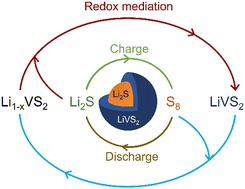
Energy Environ. Sci., 2023,16, 610-618
https://doi.org/10.1039/D2EE03297J
Dendrite-free Zn anode enabled by anionic surfactant-induced horizontal growth for highly-stable aqueous Zn-ion pouch cells
Here we propose a new anionic surfactant as an electrolyte additive to guide the preferential deposition of Zn2+ in the (002) orientation, suppress the side reactions, and realize a dendrite-free Zn anode for highly stable aqueous Zn-ion pouch cells.
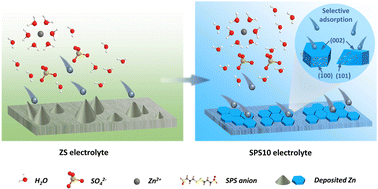
Energy Environ. Sci., 2023,16, 687-697
https://doi.org/10.1039/D2EE03528F
Effects of cation superstructure ordering on oxygen redox stability in O2-type lithium-rich layered oxides
We report that the presence of superstructure ordering serves as an important building block in securing the long-term stability of the oxygen redox activity in O2-type lithium-rich layered oxides.

Energy Environ. Sci., 2023,16, 673-686
https://doi.org/10.1039/D2EE03527H
About this collection
Welcome to our online rolling collection of the hottest work published in Energy & Environmental Science. Here we feature all recent Energy & Environmental Science articles highlighted as HOT by the handling editor or our referees. Congratulations to all the authors whose articles are featured.